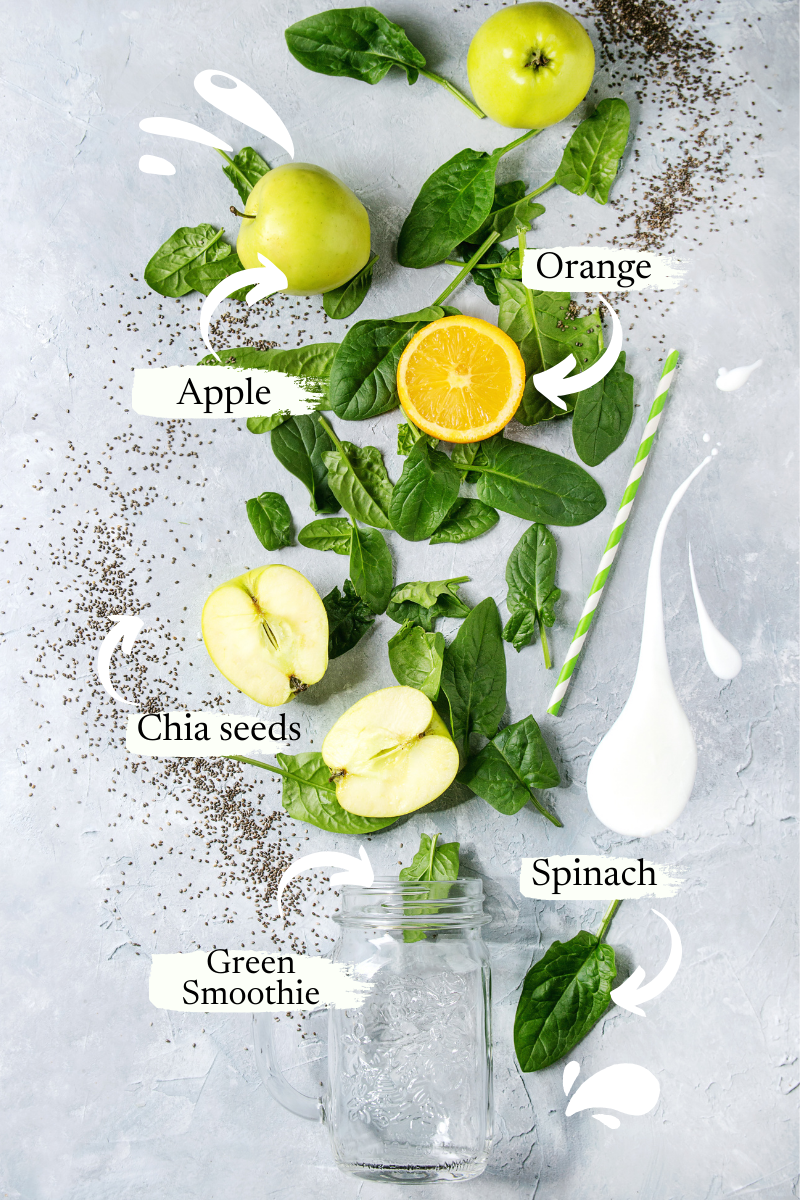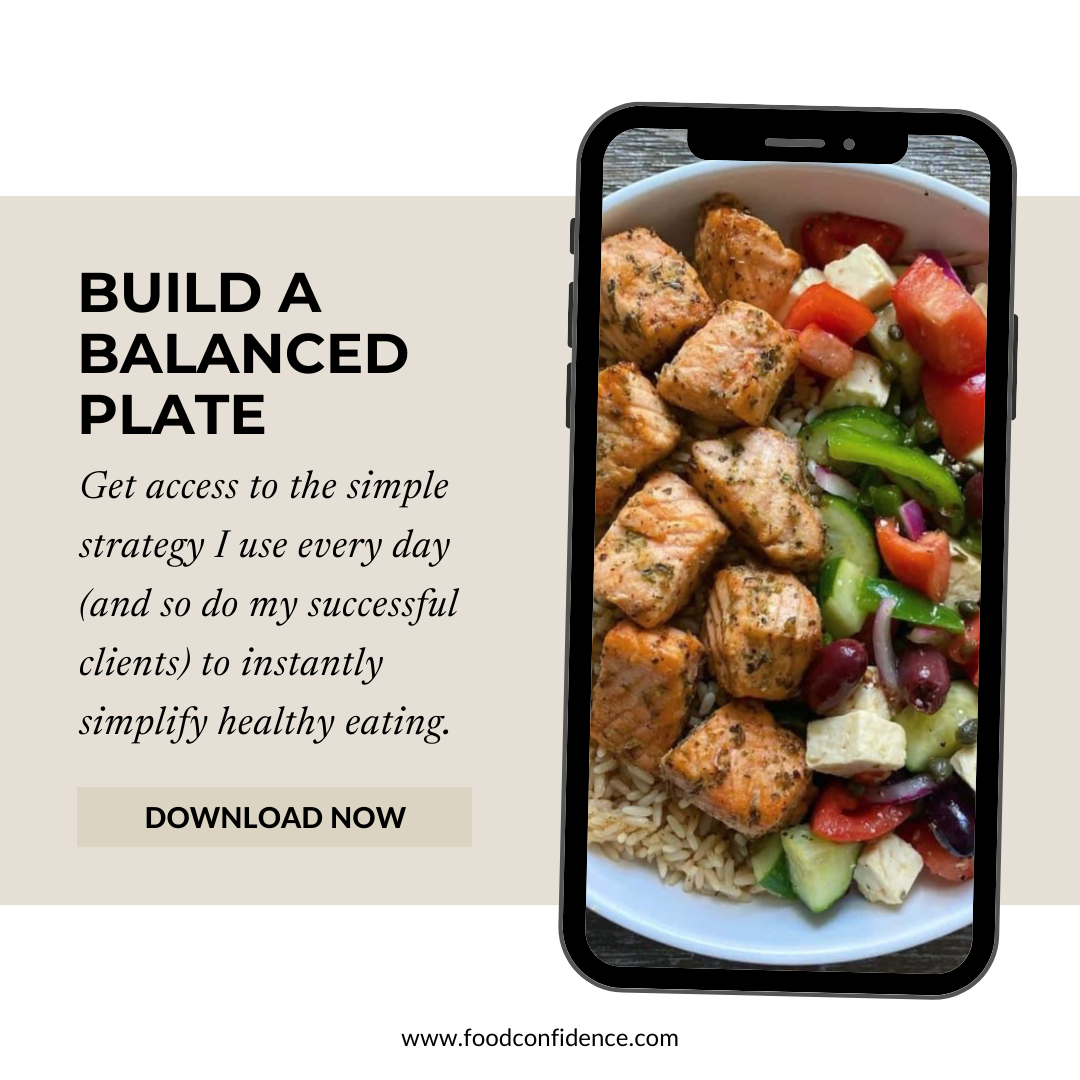
I love smoothies. I wrote the cookbook Super Green Smoothies and I’ve got tons of delicious smoothie recipes on my blog and Instagram. Smoothies are one of my favorite ways to pack a ton of fiber-rich leafy greens, free-radical-fighting berries, and other important nutrients into each day!
But along with the health benefits of consuming smoothies, one of the best things about the smoothie-making process is that it doesn’t have to be overly complicated or time-consuming.
That said, there is a bit of a “science” to blending up the perfect healthy smoothie.
The best smoothies don’t just deliver a healthy dose of nutrients; they keep you full until your next meal, taste great, and don’t spike your blood sugar. The right combination of ingredients also ensures that these nutrients will be absorbed and utilized by your body.
Let’s take a closer look at the anatomy of a healthy smoothie so you, too, can blend up a deliciously balanced smoothie every single time.
Greens
Leafy greens aren’t just for green smoothies! They’re a fantastic addition to nearly any type of smoothie you’re making: fruit smoothies, chocolate smoothies, peanut butter smoothies, protein smoothies, smoothie bowls, you name it.
A handful or two of leafy greens and other green fruits and veggies like celery, cucumber, cabbage, honeydew, and broccoli add a healthy dose of vitamins, minerals, fiber, and water to smoothies — and you probably won’t be able to taste them in there. Unless of course, that’s the taste you’re going for.
To give you an idea of how nutrient-packed greens really are, raw arugula (one of my favorite smoothie ingredients) contains vitamin A, C and K, folate, potassium, calcium, and magnesium per one cup.
A cup of raw spinach is even more nutritious, containing tons of vitamin A, C and K, folate, potassium, calcium, and magnesium.
Plant diversity is super important, so go ahead and experiment with different types of greens and see which ones you like best in your smoothies!
Some other options include:
- Romaine
- Swiss chard
- Watercress
- Mint
- Cilantro
- Collard greens
- Avocado (also counts as a healthy fat)
- Green apples
- Kiwi fruit
- Honeydew
- Pears
- Limes
Fiber
Fruits and veggies contain dietary fiber and disease-fighting phytonutrients like anthocyanidins, lycopene, beta-carotene, curcuminoids, lutein, zeaxanthin, chlorophyll, isoflavone, resveratrol, and others. This makes them the perfect addition to any healthy smoothie recipe. Experiment with a combination of fiber-rich veggies like broccoli, leafy greens, and carrots, as well as fruits such as berries, apples, and bananas. Fruits also add a bit of natural sweetness to smoothies (especially frozen bananas).
Raw nuts and seeds also contain fiber and many double as a healthy fat as well. Flaxseeds, chia seeds, oats, almonds, and pistachios are all great smoothie additions!
Fats
The best smoothies also contain healthy fats, as unsaturated fats maximize the absorption of fat-soluble vitamins (like vitamins A, D, E, and K). What’s more, fats support brain health, raise HDL cholesterol levels (the good type of cholesterol), and they help to keep you full until your next meal rolls around.
Examples of healthy fats include:
- Avocado
- Flaxseed
- Chia seed
- Raw nuts: walnuts, almonds, cashews, hazelnuts, and pecans
- Seeds: Flax, chia, sunflower, hemp, pumpkin, and sesame
- Shredded coconut and full-fat coconut milk
- Peanut and almond butters
- Ghee
- Plant oils like olive, coconut, and MCT oil
Protein
Like fiber and healthy fats, adding protein to your smoothies increases satiation so you won’t feel the need to snack between meals. Protein also contains essential amino acids that support immune function and help your body to break down and digest food. Your body relies on 20 different types of amino acids in order to function optimally each day, and nine of them (the essential amino acids) must be obtained from the plant and animal foods you eat.
Thankfully, there are lots of ways to incorporate more protein into your smoothies (even plant-based smoothies without animal products!).
Try adding any of the following:
- Greek yogurt (dairy-based or plant-based)
- Unsweetened soy milk or soy-based yogurt
- Organic silken tofu
- Cottage cheese (I like 2%)
- Hemp hearts and chia seeds
- Raw nuts
- Nut butters
- Cooked beans
- Cooked quinoa
- Protein powders containing pea, hemp, whey, brown rice, or quinoa
Liquid
Even high-powered blenders like the Vitamix need a cup or two of liquid in order to thoroughly blend each of the ingredients together and give your concoction that drinkable consistency that makes a smoothie a smoothie. A few great options include:
- Unsweetened coconut water or plain filtered water
- Unsweetened nut and seed milks like almond, coconut, cashew, oat, hemp, rice, flax, or pea
- Unsweetened soy milk
- Kefir
- Greek yogurt, dairy-based yogurt, goat milk yogurt, or dairy-free yogurt
- Fresh juices if you want to switch things up (like this one)

Healthy Smoothie Recipes to Get You Started
As I’ve said, even the healthiest smoothies don’t have to take up a lot of your time or use a ton of costly, hard-to-find ingredients. As long as your smoothies contain greens, fiber, healthy fats, protein, and a liquid, you’ll be good to go!
Here are a few smoothie recipes to inspire you:
- Chia Fresca w/ Pineapple and Turmeric
- Wild Blueberry Watermelon Smoothie
- Tarragon Berry Smoothie
- Red, White and Blue Layered Smoothie
Want to better understand how to give your body the nutrients it needs?


